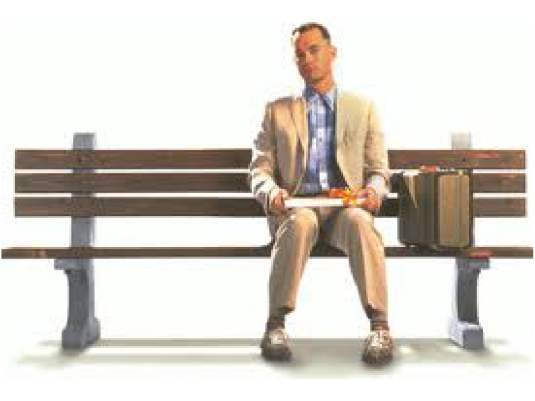
Most everyone has heard of the US Supreme Court Judge who proudly admitted that he could not define a certain something but nonetheless, he knew "IT" when he saw "IT".
Now comes a new generation of jurisprudential savants
with a similar line about Information Technologies ("IT"):
'If I don't Know "IT" When I see "IT", then Abstract must "IT" be'
First let's peek at the "IT" patent they refer to:
U.S. 7,013,284 ("Component based interface to handle tasks during claim processing ")

Figure 2A of that patent shows a "client" and a "server".
The server hosts a "database".
Here is a small block taken out of the long and complex text of the specification. As can be seen, a "database" involves "records" and "searches" and result retrival issues:
Large Result Set
When retrieving records from a database, if the search criteria is too broad, the amount of data required to be retrieved from the database and passed across the network will affect user perceived performance. Windows requesting such data will be slow to paint and searches will be slow. The ... By designing the controllers that present the database queries intelligently, the queries that are presented to the database server do not return a result set that is large enough to affect user perceived performance. ... The scrolling retrieval of a large result set is the incremental retrieval of a result subset repeated as many times as the user requests or until the entire result set is obtained. Results are retrieved by the Bounded Query Approach where the first record is determined by a where clause with calculated values.
Here is what the majority understands in the subject case of ACCENTURE GLOBAL SERVICES v. GUIDEWIRE SOFTWARE
Accenture only points to system claim 1’s inclusion of an insurance claim folder, a task library database, a server component, and a task engine in attempting to show that the system claim is meaningfully different from the ’284 patent’s method claims. However, these software components are all present in the method claims, albeit without a specific reference to those components by name. ... The insurance transaction database of method claim 8 also stores insurance claims in a structured environment and decomposes them into different levels. Thus, the claim folder only provides insignificant activity that does not meaningfully differentiate the system claim from the method claim. ... the task library database is simply a formalized collection of the rules that are present and applied to the insurance transaction information in method claim 8.

Simple is as simple talks.
(Particularly when one sits on the "bench")
The majority doesn't even know how to point to the correct figure (2A):
Further, although the patent’s Figure 1 shows a schematic diagram of the invention, one that includes computer hardware, the schematic’s hardware is merely composed of generic computer components that would be present in any general purpose computer.
And finally, the coupe de grace:
Indeed, in this case “[t]he system claims are [akin] to stating the abstract idea [of the method claim] . . . and adding the words: ‘apply it’ on a computer.” CLS Bank, 717 F.3d at 1291 (plurality opinion) (citing Mayo, 132 S. Ct. at 1294). Because the system claim and method claim contain only “minor differences in terminology ... they rise or fall together.
